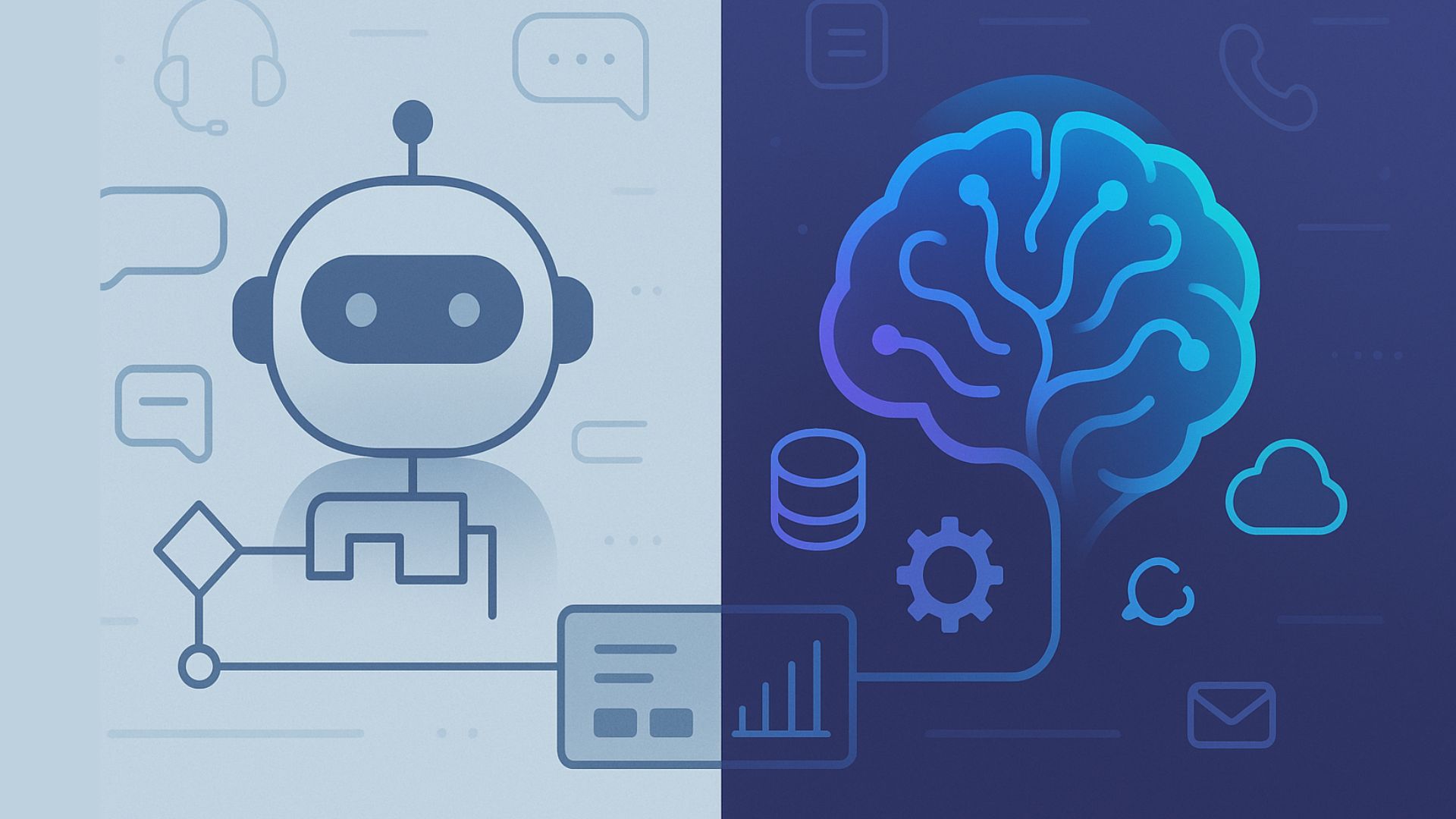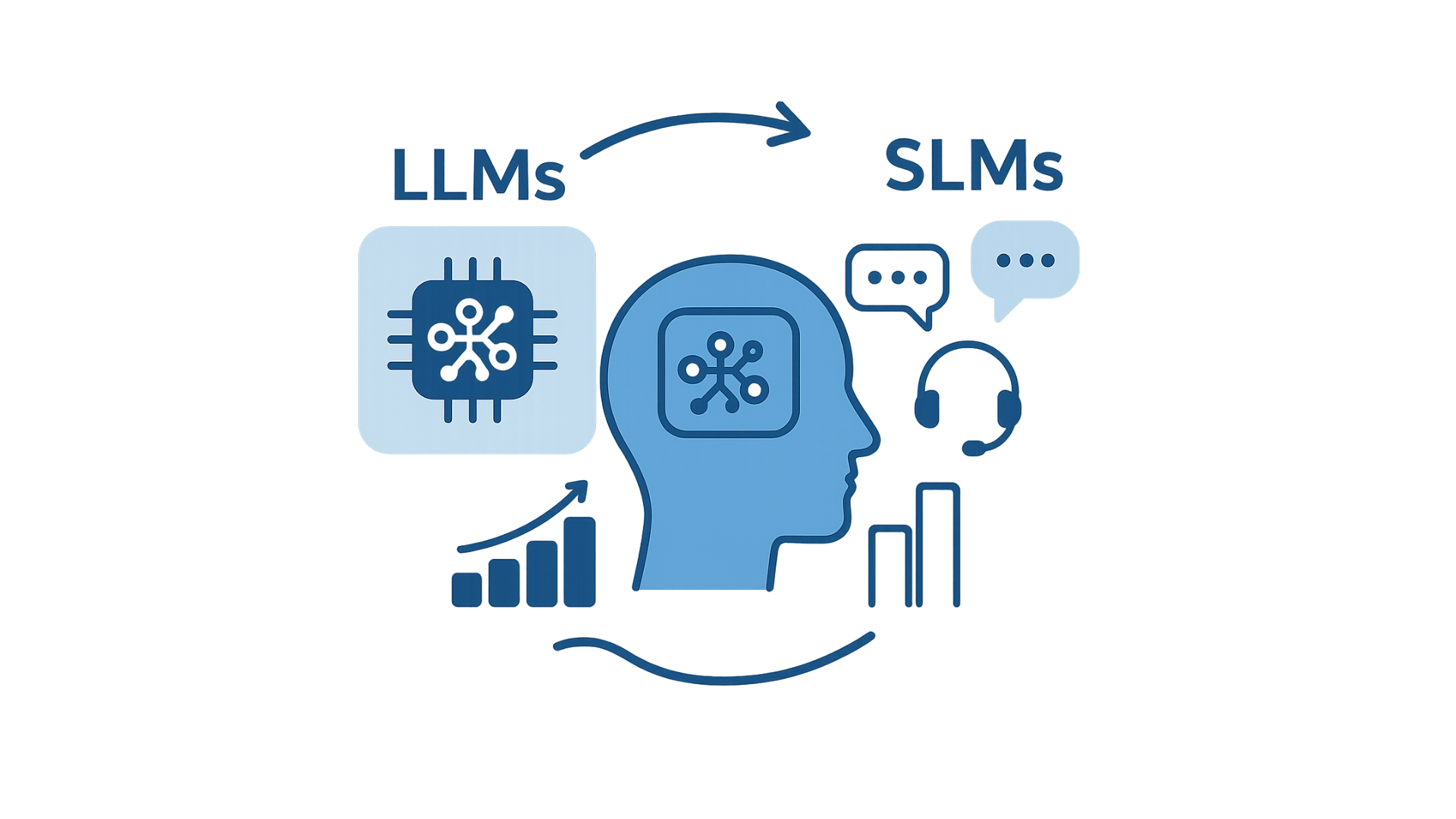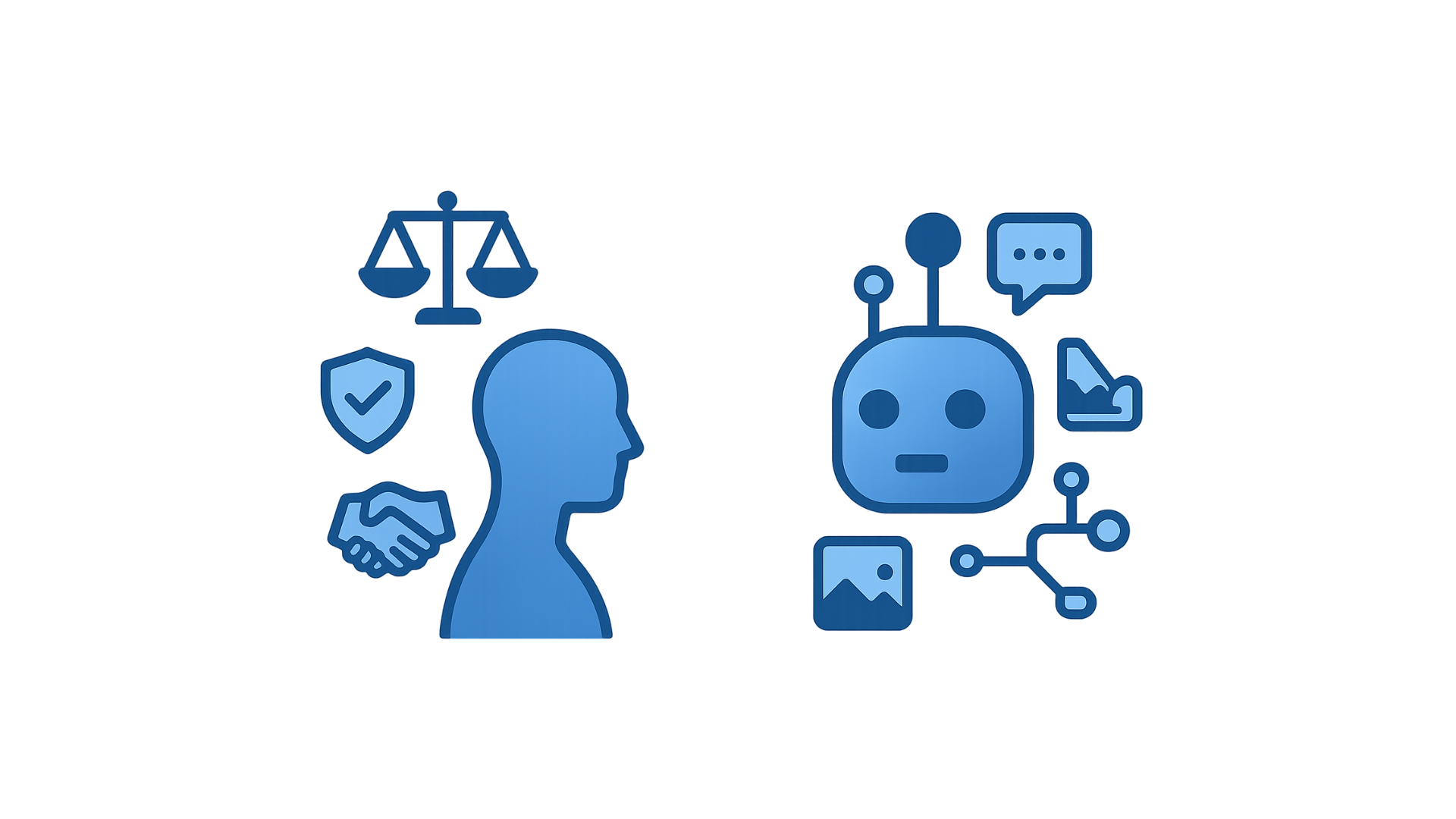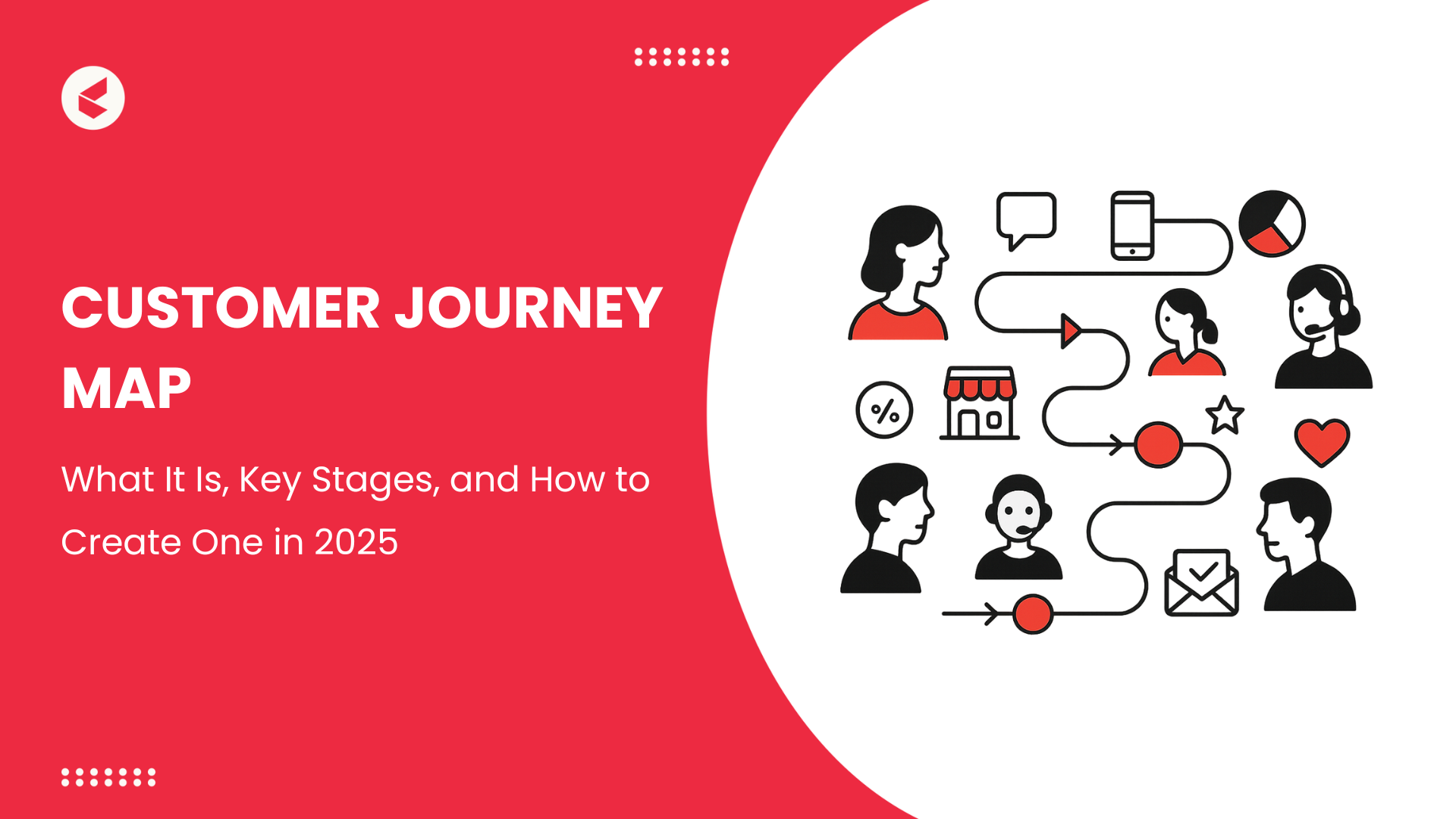Agentic AI vs Traditional Virtual Assistants: A Technical Comparison

Introduction
Artificial intelligence is evolving from basic virtual assistants into more autonomous agentic AI systems. Traditional virtual assistants (like early chatbots or voice assistants such as Siri or Alexa) are powerful but fundamentally reactive – they wait for user commands and follow predefined scripts or functions. In contrast, agentic AI represents a new generation of AI that is proactive, goal-driven, and capable of making independent decisions. This guide provides a technical comparison of agentic AI vs. traditional virtual assistants, covering their definitions, architectures, key differences, use cases, and future outlook. The goal is to give developers and technical readers a clear, concise understanding of how these AI paradigms differ and where they are each most effective.
What is a Traditional Virtual Assistant?
Traditional virtual assistants (including classic chatbots and voice assistants) are AI systems designed to simulate conversations and perform tasks in response to user requests. They operate within a predefined scope and typically rely on recognizing user inputs (via text or voice) and mapping them to specific answers or actions. Many early virtual assistants were rule-based, using hard-coded keywords and decision trees (if-then logic) to generate responses. For example, a FAQ chatbot might respond with a canned answer when it detects a certain keyword, or a voice assistant might execute a fixed command when given an exact phrase.
Modern virtual assistants have grown more sophisticated by leveraging machine learning and large language models (LLMs) for natural language understanding. This means they can parse a wide variety of phrasing and provide more conversational answers. However, even with advanced NLP, traditional assistants remain essentially reactive tools – they require explicit prompts or questions from the user for every action. They typically perform only the specific functions they were programmed or integrated to handle (checking weather, setting reminders, answering knowledge questions, etc.) and do not go beyond their predefined capabilities. In other words, a traditional AI assistant follows instructions and performs narrow tasks, but does not take initiative on its own.
Limitations: By design, classic assistants have limited memory and learning capability. They often treat each interaction as isolated – “every chat is a clean slate”. They usually don’t retain context from past conversations (beyond a single session) and don’t improve unless developers manually update their rules or training data. If a user’s query falls outside the scripted scenarios, the assistant often fails or hands off to a human agent. They also tend to operate in silos, tied to a single platform or data source. For instance, a basic chatbot on a website might not seamlessly pull data from your calendar or corporate database without custom integration, reflecting the limited scope of integration in traditional assistants. In summary, traditional virtual assistants are reliable for simple, well-defined tasks, but they lack initiative, long-term learning, and deep adaptability. They “don’t proactively solve problems or handle anything outside their codebook”.
What is Agentic AI?
Agentic AI refers to AI systems (often called autonomous AI agents) that have a degree of agency – they can think, plan, and act independently to achieve goals. Unlike a typical bot that waits for commands, an agentic AI can reason through complex tasks, make decisions, and carry out multi-step operations with minimal human guidance. IBM describes an AI agent as a system that can “autonomously complete tasks on behalf of users… by designing its own workflow and by using available tools.” In practical terms, once you give an agentic AI a high-level goal or objective, it can figure out the necessary steps and execute them – even if that involves interacting with external systems or adapting to new information on the fly.
To illustrate, imagine a next-generation travel assistant. A traditional assistant might answer if you ask, “Is my flight on time?” or “Reschedule my 3 PM meeting.” An agentic AI, on the other hand, could proactively scan your calendar and email, notice your upcoming flight is delayed, rebook you on a later flight, notify the meeting attendees, and even draft an email explaining the situation – all without being explicitly asked. This proactive, goal-oriented behavior is the hallmark of agentic AI.
Key Characteristics of Agentic AI
Agentic AI systems are technically more advanced and “evolved cousins” of traditional bots. They typically exhibit a few fundamental traits that enable their autonomy:
1. Autonomy and Initiative: After an initial prompt or goal, an agentic AI can carry on independently, deciding what actions to take next without needing step-by-step instructions or human approval at each juncture. In effect, the AI agent “doesn’t sit idle” waiting for input – it actively works toward the user’s objectives. It can plan a sequence of actions (e.g. find a problem’s cause, then fix it, then report back) and execute them proactively. This is a major contrast to traditional assistants that only act when directly invoked by the user.
2. Contextual Understanding and Memory: Agentic AI maintains persistent memory of context and past interactions. This long-term context tracking means the agent can learn from history and tailor its behavior accordingly. For example, if an AI agent has been resolving IT support tickets, it can remember which solutions worked before or which cases required human help, and apply that knowledge to new tickets. Traditional assistants, by contrast, often forget prior conversation as soon as it ends, whereas an agentic system builds on past experiences.
3. Learning and Adaptation: Agentic AI improves over time through techniques like online learning or reinforcement learning, adjusting its strategies based on what works and what doesn’t. The system essentially learns from feedback and outcomes, much like a human would refine their approach after practice. This self-improvement loop allows agentic agents to handle unexpected situations better and reduce errors gradually, without needing a developer to explicitly reprogram them for each new scenario. Traditional bots, on the other hand, have “static learning”; they operate within the boundaries of their initial training and require manual updates for any expansion of capability.
4. Goal-Driven Planning: Rather than handling one query at a time, an agentic AI works towards broader objectives. It can break down a big goal into sub-tasks and figure out the optimal sequence of steps to accomplish it. In essence, it employs planning algorithms (often using an LLM as a “reasoning engine”) to decide not just what to do, but how to do it in a multi-step process. For example, an agentic sales AI might autonomously source leads, then schedule meetings, then draft proposals – chaining these tasks together toward the goal of closing a deal. This kind of multi-step orchestration is beyond the scope of a traditional assistant, which typically handles one task per user request.
5. Tool Use and Integration: Agentic AI systems can seamlessly integrate with external tools and systems to execute tasks in the real world. They are not limited to a single chat interface. These agents might call APIs, query databases, run code, control IoT devices, or even operate software interfaces (for example, an AI agent could fill out a web form or click buttons on a web app as needed). This extends their capabilities far beyond answering questions – an agent can take actions on enterprise systems or online services directly. In effect, they bridge conversational AI with actions akin to robotic process automation (RPA). (IBM’s research notes that some advanced agents like Anthropic’s Claude have demonstrated the ability to control a computer interface to complete tasks autonomously.) By contrast, a traditional virtual assistant usually has a limited set of predefined integrations or “skills” and cannot choose new tools on its own.
In summary, agentic AI systems combine sophisticated reasoning (often powered by large models), memory, adaptability, and connectivity to act as autonomous problem-solvers. They don’t just respond to inputs; they pursue goals and adjust their actions as needed to achieve the desired outcomes. This makes them more like independent agents working on a user’s behalf, rather than passive assistants.
Architecture of Traditional Virtual Assistants
From a developer’s perspective, a traditional virtual assistant (or chatbot) typically has a relatively straightforward architecture:
1. Input Processing: The assistant takes in user input (text or voice). If voice, it uses Automatic Speech Recognition to transcribe it to text. Then it uses Natural Language Processing to understand the request (often through intent classification and entity recognition). Early systems relied on exact keyword matching or rules, while newer ones use machine learning models or even LLMs to parse the user’s natural language query.
2. Decision/Logic Layer: Based on the interpreted input, the assistant routes to a predefined intent or script. For example, if the user asks “What’s the weather tomorrow?”, the system matches this to a “weather forecast” intent. This triggers a fixed logic: call a weather API with the user’s location, then format the result. Traditional assistants often use decision trees or finite state machines for dialog – meaning the conversation follows a tree of expected user responses. If the user says something unexpected, the bot might either default to a generic answer or fail to understand (leading to the infamous “Sorry, I didn’t get that” response). This rigid flow is why such bots can feel limited. They “follow fixed scripts” and struggle if the conversation veers off the predefined path.
3. Backend Integrations: The assistant can perform certain actions via integrations that developers have explicitly implemented. Common integrations include fetching information from databases, calling external services (e.g., booking a meeting via a calendar API), or simple transactions like placing an order. Traditional assistants are typically limited to the tools and data sources defined in their scope. They won’t arbitrarily use new tools; every capability is programmed (for instance, a weather skill, a music playing skill, etc., each added manually). This means they operate largely in isolation, without dynamic access to arbitrary systems.
4. Response Generation: Finally, the assistant produces a response to the user. This could be a text reply (possibly templated or filled in with data from the integration) or a voice response via text-to-speech. The response content is usually predetermined or follows a pattern to ensure accuracy and compliance (e.g., a specific format for a weather report or an error message).
Key constraints: Traditional architectures often lack a long-term memory store. Any context beyond the current interaction must be explicitly passed along or is simply not retained. If a user asks a follow-up question that assumes the assistant remembers earlier context, a basic assistant might not handle it unless it was built into that conversation flow. Also, any learning or improvement in a traditional assistant usually comes from periodic model re-training or adding new rules by developers. The bot itself isn’t dynamically rewriting its behavior – it’s “reliable but not proactive… always waiting for instructions”. This makes traditional assistants relatively predictable and safe for narrow tasks, but also means they require human maintenance to expand capabilities.
Today, many virtual assistants (including enterprise chatbots) do use powerful language models under the hood to interpret user input, which increases their flexibility in understanding language. But even the most advanced assistants (e.g., a voice assistant with an LLM) will still only act within the confined set of actions its developers allowed. For example, an AI writing assistant integrated in an IDE can help write code when asked, but it will not spontaneously reorganize your codebase unless you prompt it to do so. In essence, the architecture enforces that the assistant waits for a prompt, executes one task, and stops.
Architecture of Agentic AI Systems
Agentic AI systems build upon the foundations of traditional AI but add layers that enable autonomy and complex decision-making. There isn’t one “standard” architecture, but most agentic AI implementations share common components designed to fulfill the traits discussed above:
1 . Goal and Task Manager: Instead of just reacting to a single user query, an agentic AI often starts with a higher-level goal or objective given by the user or system. An internal manager module then plans a series of tasks or actions to achieve that goal. This may involve breaking the goal into subgoals (a process sometimes called task decomposition or task chaining). For instance, if the goal is “optimize our quarterly supply orders,” the system might break this into checking inventory levels, forecasting demand, placing orders, and scheduling deliveries. The agent effectively designs its own workflow to accomplish the goal.
2. Reasoning Engine (LLM or Similar): Under the hood, many agentic AIs use a large language model or another AI model not just for understanding language, but for complex reasoning. The LLM can be prompted to generate plans, infer what information is needed next, or decide between different options. In execution, the agent might iterate through a loop of Think -> Act -> Observe: it evaluates the situation, decides on an action, executes it, then observes the result, and repeats until the goal is met. This kind of autonomous loop is what frameworks like AutoGPT and others attempt, using LLMs to emulate a form of logical planning and reflection. As IBM notes, “using advanced NLP from LLMs, AI agents comprehend user inputs step-by-step, strategize their actions, and determine when to call on external tools.” The AI’s ability to chain thoughts and actions is a defining part of its architecture.
3. Memory (Short-term and Long-term): Agentic systems include memory components to store state, context, and learnings. This can be a combination of short-term memory (the context of the current task or recent dialogue, often handled by the context window of an LLM or a scratchpad) and long-term memory (a database or vector store that logs past interactions, facts, or results). Persistent memory allows the agent to recall prior events and user preferences. For example, if an agent solved a problem yesterday, it can remember that solution and skip redundant steps when a similar problem occurs tomorrow. Technically, developers might implement this via embedding relevant data and retrieving it when needed (so the agent can “remember” relevant info by re-injecting it into the prompt). The result is an AI that builds knowledge over time rather than resetting every session.
4. Tool Integrations and Environment Interfaces: A crucial part of agentic architecture is the ability to interact with external systems. This is often implemented through a library of tool plugins or APIs that the agent can invoke. For instance, an agent might have the ability to: call web APIs (to get weather, stock prices, etc.), run code or scripts, query databases, send emails or notifications, or control IoT devices. Some agent frameworks even allow the AI to control a web browser or GUI (simulating clicks and keypresses) to accomplish tasks. The architecture must include a secure execution environment for these actions (to prevent unwanted operations) and a decision layer where the AI decides which tool to use when. Simply having an LLM with access to tools isn’t enough, the system must also include logic for tool selection and usage based on the context. In practice, the AI may try an action and, using feedback (success/failure of the action), adjust its plan.
5. Multi-Agent Orchestration (in some cases): Some agentic AI solutions involve not just a single agent but a collection of specialized agents working together. For example, one agent might be skilled at language tasks (understanding instructions and generating text), another at querying databases, another at performing calculations, etc. These agents can pass tasks among themselves, coordinated by a higher-level orchestrator agent. This resembles a “team” of AI agents collaborating, which can be more efficient for complex workflows. Not all agentic systems require multiple agents – some are implemented as one agent that can do multiple things – but the architecture is flexible to allow modular “expert” agents. There are emerging frameworks to support this (e.g., tools for multi-agent communication and planning). The end goal is the same: tackling parts of a big problem in parallel or sequence and sharing results to achieve an overarching goal that a single simple bot could not handle alone.
6. Learning and Feedback Loop: Architecturally, agentic AI often includes a loop for continuous learning. This could be online learning from user feedback (reinforcement learning signals, reward models) or offline updates retraining the model on collected data. Some advanced agents use reinforcement learning during operation – they have a notion of “reward” or success criteria for the task, and they try different approaches, learning which sequence of actions yields the best outcome. Even without formal RL, an agent can self-evaluate outcomes (via built-in tests or heuristics) and adjust its strategy next time. Over time, this makes the agent more robust. In deployment, developers might monitor the agent’s decisions and outcomes, and feed those back into improved models or rules – effectively a human-in-the-loop training regimen to refine the agent’s performance.
Overall, an agentic AI’s architecture is geared towards flexibility and autonomy: it has components to understand open-ended instructions, maintain state, decompose and plan tasks, access various tools, and learn from experience. This is inherently more complex than a traditional assistant’s architecture, which can be relatively linear. The trade-off is that with great autonomy comes a need for robust design: developers must consider how to constrain the agent when needed (for safety/security), how to debug its decision-making, and how to ensure reliability when it’s operating without constant oversight.
Key Differences Between Agentic AI and Traditional Assistants
Below is a side-by-side comparison highlighting the core differences between a traditional virtual assistant (or chatbot) and an agentic AI agent:cTable: Traditional Assistant vs Agentic AI – A comparison of their behaviors and capabilities.
Use Cases and Applications
Both traditional assistants and agentic AI have roles to play, but their ideal use cases differ. Here are some areas where agentic AI systems shine, often doing what traditional assistants cannot:
1. Customer Service and Support: Agentic AI can act as a tireless support agent that not only answers customer queries but also takes proactive actions to resolve issues. For example, it might follow up on an unresolved support ticket by itself, check related knowledge base articles, attempt fixes, or escalate to a human if needed. It learns from each interaction, improving with every customer it helps. Traditional support chatbots, in contrast, usually stick to answering FAQs or collecting information before handing off to a human. Agentic AI can handle end-to-end case resolution for many issues, leading to faster service and lower support costs.
2. Sales and Marketing Automation: In marketing, an agentic AI could manage multi-step campaigns: qualify leads, personalize outreach emails, schedule follow-up meetings, and analyze campaign performance – all automatically. It can adapt content based on what resonates with customers (learning from responses or conversion rates). For sales, an AI agent might track a pipeline, send reminders, generate proposals, and even negotiate meeting times. Traditional assistants might assist with single steps (like sending an email when asked), but an agentic approach orchestrates the whole workflow to actively drive conversions and nurture leads.
3. Research and Data Analysis: An agentic AI excels at digesting and summarizing large amounts of information. In a research setting, it could autonomously scan news feeds or scientific papers, extract key insights, and compile a report. It might even propose next steps (e.g., suggesting new experiments in R&D based on the latest findings). Essentially it serves as an intelligent analyst. Traditional assistants, at best, could fetch specific data when asked, but wouldn’t proactively monitor or synthesize information across sources.
4. IT Operations and DevOps: In IT or cloud operations, agentic AIs can monitor systems for anomalies, diagnose incidents, and even take corrective action – all automatically. For example, an AI agent could detect a server is under high load and autonomously provision additional resources or reroute traffic to prevent downtime. It can apply patches and optimizations on its own, according to policies. This is like having a Level-1 ops engineer on duty 24/7. Traditional scripts might alert a human or restart a service on failure, but an agentic system can handle more nuanced decision-making (e.g., which fix to apply) without waiting on human intervention.
5. Human Resources and Administration: Agentic AI can streamline HR processes by acting across multiple steps. Imagine an onboarding agent that automatically prepares accounts and permissions for a new hire, schedules their training sessions, and answers their questions about company policy as they arise. Or a recruiting agent that scans incoming resumes, schedules interviews with available panel members, and even conducts an initial screening Q&A with candidates. These involve coordination of various tasks that agentic AI is suited for. Traditional HR chatbots usually just answer employee FAQs (like “How do I reset my password?”). An agentic system goes further to manage the processes and only involve humans when necessary.
6. Finance and Operations: In finance, agentic AI could perform autonomous forecasting, detect financial anomalies, or optimize supply chain orders. For example, an agent could continuously monitor inventory and sales trends and trigger reorders or redistribution of stock proactively. It could reconcile accounts by fetching data from different systems and applying rules, only flagging items that need human review. Such multi-step, cross-system tasks are error-prone and time-consuming for people, but an AI agent can handle them efficiently. Traditional tools in this domain are usually either RPA scripts (which are brittle) or decision support systems that still require human direction, whereas an agentic solution can adapt and make decisions in real time.
7. Personal Productivity: On an individual level, agentic AI could serve as a more powerful personal assistant. It might manage your schedule by learning your preferences, automatically book or reschedule meetings when conflicts arise, draft routine emails, and remind you of tasks without being told explicitly each time. It essentially becomes an AI chief of staff that keeps you organized. We already see hints of this in smart email assistants or calendar apps, but agentic AI would take it further – negotiating meeting times with others’ agents, prioritizing your to-do list based on your goals, and so on. Traditional virtual assistants (like current voice assistants) have very limited proactivity – they won’t reorganize your day unless you specifically ask, for instance.
It’s important to note that many of these use cases pair simple tasks with complex autonomy. A traditional bot might handle one step (like retrieving a piece of data or sending a notification), whereas an agentic AI handles the entire chain of steps across systems to achieve the outcome. The common theme, as one analysis puts it, is “multistep automation with learning.” Agentic AI solutions address numerous steps in a process, learn preferences over time, and achieve outcomes with minimal oversight. This opens up possibilities to redesign workflows in enterprises and daily life, offloading not just manual labor but also decision-making to AI in a controlled way.
Future Outlook and Considerations
The rise of agentic AI is an exciting development, but it also comes with challenges and a need for careful implementation. Looking ahead:
1 . Convergence of Assistants and Agents: We can expect traditional virtual assistants to increasingly incorporate agentic features. Major tech platforms are already researching how to make their assistants more autonomous and context-aware. It’s likely that future “virtual assistants” will blur the line with agentic AI – for example, a voice assistant that can handle an open-ended goal (“Help me organize a vacation”) by planning flights, booking hotels, adjusting your work calendar, etc., proactively. In the enterprise, chatbot platforms are adding more integration and orchestration capabilities so that bots can handle multi-step tasks. In essence, today’s assistants may evolve into tomorrow’s agents.
2. Adoption and Impact: Industry trends show rapid adoption of agentic AI approaches. Surveys indicate that a large majority of organizations are exploring or piloting AI agents. For instance, one report found over 60% of global enterprises are experimenting with agentic AI, and 88% plan dedicated budgets for it in 2025. The market for agentic AI tools and platforms is projected to grow dramatically over this decade. Gartner analysts predict that by 2028, a significant portion of business software will include agentic AI capabilities, and as much as 15% of daily work decisions could be handled autonomously by AI agents. This suggests that agentic AI might become a standard part of software systems, driving productivity by taking over routine decision loops.
3. Technical Advancements: Key AI research areas are actively feeding into better agentic systems. Improvements in LLM reasoning and planning (for example, efforts to reduce AI hallucinations and make chain-of-thought reasoning more reliable) will make autonomous agents more dependable. Enhanced tool integration frameworks and APIs are emerging so that agents can safely interface with more aspects of digital life. Multi-agent systems research is making progress in how agents can collaborate or divide tasks. Meanwhile, techniques for self-improvement (like advanced reinforcement learning and fine-tuning on feedback) are evolving, which will help agents become more adept over time. We are also seeing new developer frameworks (e.g. LangChain, AutoGen, and others) that simplify the creation of these agentic workflows, enabling developers to compose complex behaviors with less code.
4. Challenges and Responsible AI: With greater autonomy comes the responsibility to manage risks. Agentic AI systems are still early in maturity, and they can fail in unpredictable ways. For example, if an underlying language model generates a faulty plan or “hallucinates” a step, an unsupervised agent might take incorrect or even harmful actions. There have been reports of AI agents producing unintended results, which is why 96% of organizations deploying AI agents also view them as potential security or safety risks. Future developments will need to focus on robust guardrails: setting appropriate permissions for what agents can do, monitoring their actions (human-in-the-loop oversight for critical decisions), and ensuring transparency so developers can understand an agent’s reasoning. Additionally, cost can be a concern – running complex AI agents (especially those that call large models frequently or use many integrations) might be expensive, and not all experiments have clear ROI, leading Gartner to project that up to 40% of agentic AI projects could be scrapped by 2027 if they don’t demonstrate value. Therefore, businesses and developers should approach agentic AI with clear objectives and evaluation methods to ensure these systems are indeed delivering the intended benefits.
5. Ethical and User Perspective: On the user side, gaining trust in autonomous AI will be crucial. Users will need to feel comfortable handing off more control to AI agents – which means those agents must prove reliable and align with user intentions. Features like explaining their decisions (“I did X because…”) and allowing user intervention or override can help in this regard. Over time, as success stories accumulate (e.g., AI agents saving significant labor or preventing issues proactively), confidence in agentic AI will grow. The future likely holds AI agents acting as collaborative partners in many fields – from personal life (health coach agents, financial planning agents) to professional domains (project management agents, intelligent co-developers in software teams). The end vision is an ecosystem where humans and AI agents work together fluidly, each doing what they’re best at.
In conclusion, agentic AI vs traditional assistants is not a story of one completely replacing the other, but rather of augmentation. Traditional virtual assistants provided the foundation by handling simple, user-driven tasks and familiarizing us with AI help. Agentic AI builds on that foundation to handle complex, goal-oriented tasks with far less hand-holding. For developers, this shift means designing AI systems that can operate more like autonomous services – considering aspects like goal management, statefulness, and safety. For organizations, it means re-imagining processes that can be delegated to AI with oversight. We stand at an exciting inflection point in AI development: moving from tools that assist us when asked, to tools that act on our behalf as true collaborators. By understanding the differences and leveraging each where it fits best, we can harness the full potential of both traditional assistants and agentic AI agents in the years ahead.
Your Plan. Your Value. Your Growth.
Your business is different – and the pricing should reflect that.
Let’s build a plan that matches your goals, maximizes ROI, and scales with your success.












